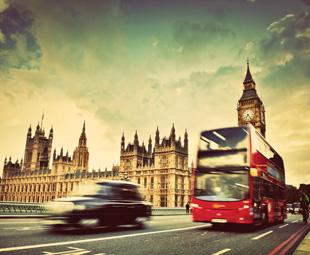Lessons from (and for) London!

A recent visit to Great Britain’s capital city revealed that even a country with such an illustrious public transport past can sometimes miss the mark.
The now defunct London Transport (LT), as Frank Beeton reminded us in FOCUS September, once ran the biggest fleet of trolleybuses in the world.
London is widely regarded as a world leader in public transport. It has much to be proud of: the iconic red double-deck buses; its comprehensive route coverage; excellent frequencies; probably the most integrated fare system in the English-speaking world; and an information system second to none.
Yet, there are problems with the modern-day Transport for London (TfL). One is obvious, the other less so. First, despite bus priority lanes in many places and congestion charging in the central area, slow traffic has brought the bus service to its knees.
In late September, it took 45 minutes to get from Waterloo station to Liverpool Street station and 60 minutes on the return – a distance of 3,9 km. The sidewalks were carrying more people than the buses and cars combined.
I stayed on the bus (route 26 in both directions) for no other reason than to be able to write about it in this column. All the other passengers got off and walked – many of them having to negotiate with the driver to open the doors for them between stops – a practice heavily frowned on by TfL!
The financial consequences for TfL’s buses must be horrendous – more buses are presumably needed to carry fewer passengers, while many instances were noted of buses being turned short.
One of the main reasons for the problem is the huge amount of construction activity going on (not only in central London, but within a 25 km radius), resulting in road closures, one-way schemes and general disruption. A contributing factor is that almost every set of traffic lights has a separate pedestrian phase.
Solving this problem will require TfL to do more than merely extending the congestion charging zone – it will be necessary to completely ban cars (including metered taxis) from many streets.
The less obvious problem is the direct cause of the first. London’s bus route pattern, although comprehensive, is a bowl of spaghetti that has built up over a period of more than 100 years and which needs serious revision.
Instead of scrapping its trolleybus system, LT should rather have reorganised them on a smaller number of key routes to complement the Underground, and rearranged the diesel routes to complement the trolleys.
This poorly motivated decision – which London is now trying to correct by spending huge sums on hybrids and “Borismasters” – resulted in the decimation of trolleybuses throughout the English-speaking world.
If the 25 LT trolleybuses once destined for Durban (my home town) had got there, they would not only have made an equal contribution to the war effort, but would have lasted until 1967, and would have made profits until 1965!
TfL tries to simplify the confusion by providing thousands of different “spider maps” on its website and at bus stops, but it is significant that TfL, itself, does not produce an overall map of its entire bus operation. It leaves that to a private citizen, Mike Harris, who “fills the gap” with his Greater London Bus Map that TfL allows him to sell at its Museum Shop near Covent Garden.
Obviously the map is too complicated for the casual user, but serious students of public transport ought to be quite disturbed at the considerable amount of duplication and overlap between routes that is shown there. The map should be an embarrassment to TfL, and should be the subject of academic inquiry by local universities.
Until TfL’s bus pattern is fixed, London’s “flexible” diesel buses will continue to get in each other’s way and the city will have to continue spending billions of pounds on expensive extensions to its rail system, including Docklands Light Rail, the Croydon Tram, the London Overground, the Jubilee line and Crossrail.
Overhead wires supply electricity more cheaply than hybrids and batteries, so trolleybuses operating on a simplified bus route pattern could be carrying many of these passengers at a lower cost.
Why bother with London? South Africa is actually in a stronger position to set an example, for now. First, our cities have more available road space to accommodate both buses and cars.
Second, the absence of a culture of public transport in South Africa may actually be an advantage, since local bus route patterns have not become “fossilised” as they have in London. By using electric trolleybuses on the Moloto Road, we could show the rest of the world how it should be done.
Vaughan Mostert developed a love for public transport early in life, which led to a lifelong academic interest in the subject. He recently retired as a senior lecturer from the Department of Transport and Supply Chain Management at the University of Johannesburg. Through Hopping Off, Mostert leaves readers with some parting food for thought as he continues his push for change in the local public transport industry.
Published by
Focus on Transport
focusmagsa




